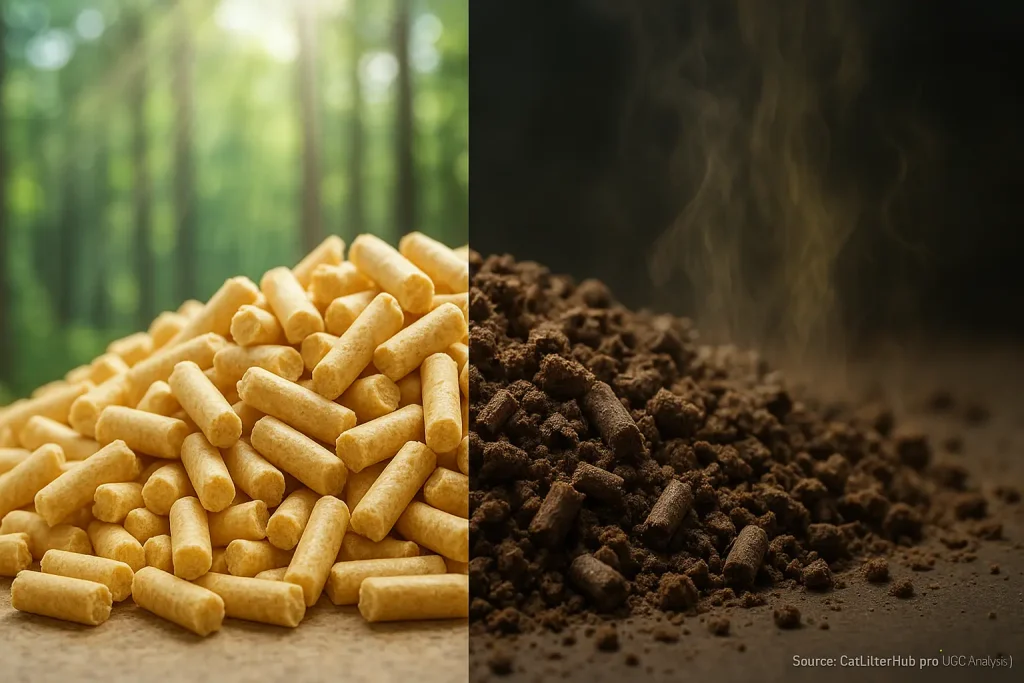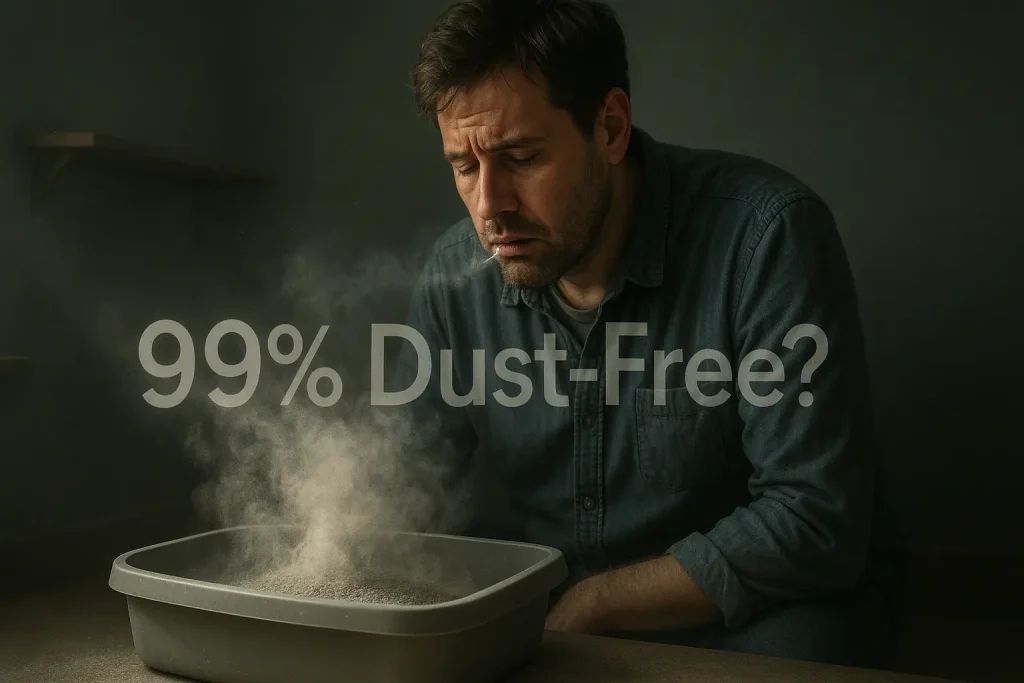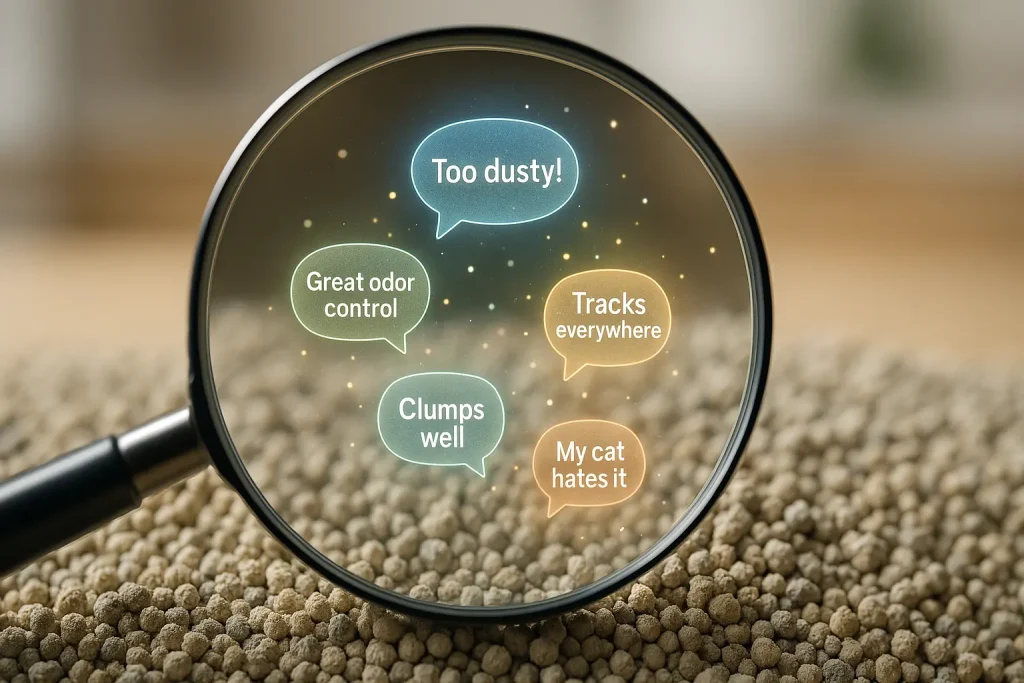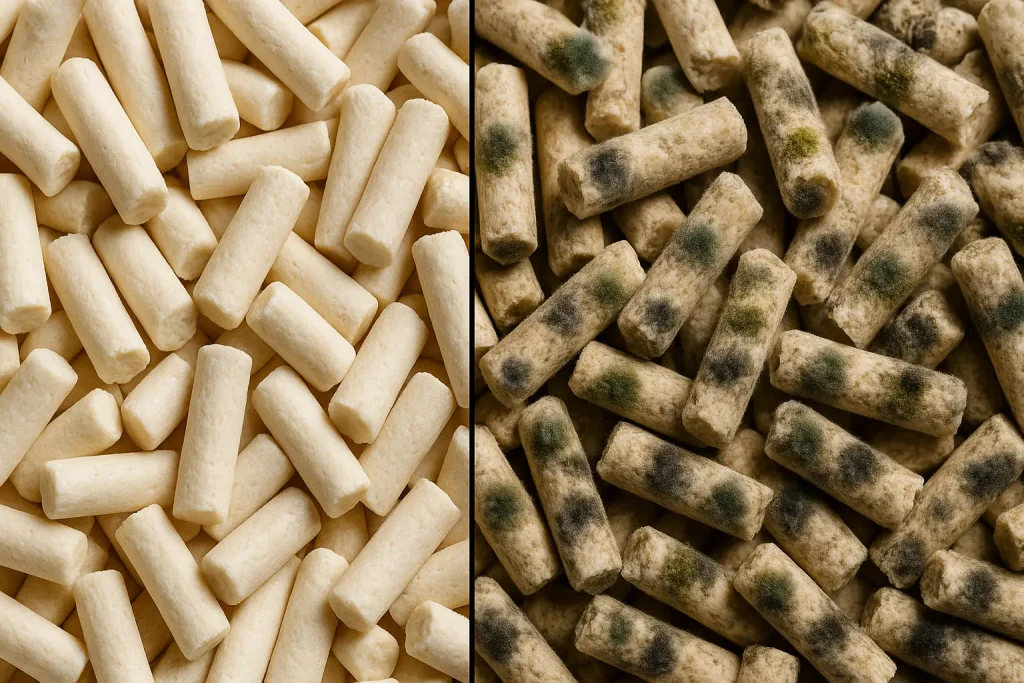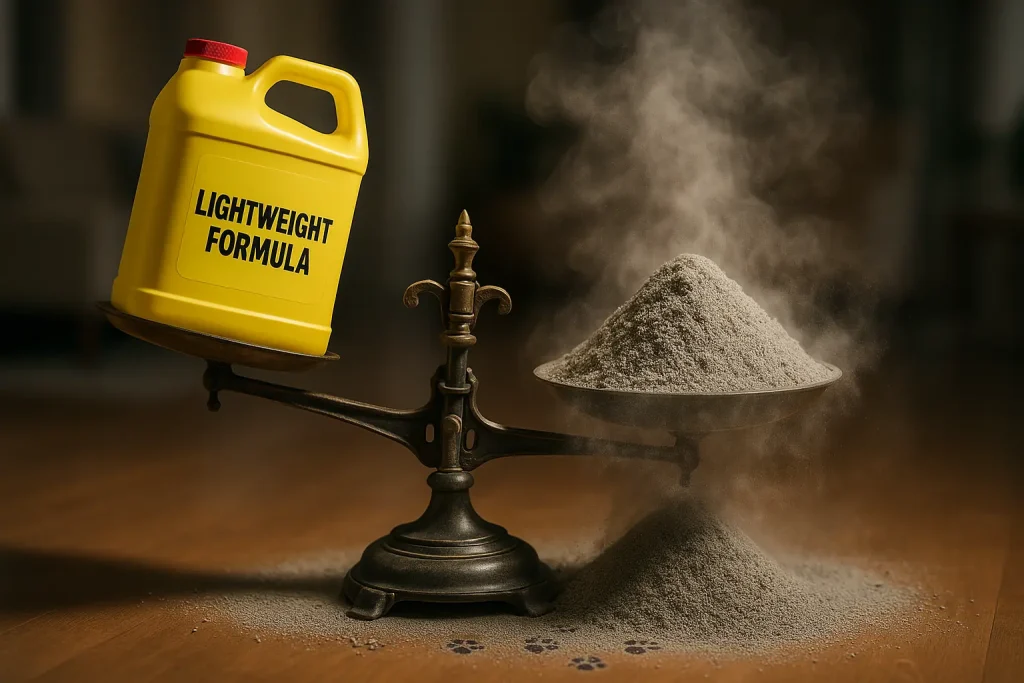Why Does My Litter Box Smell WORSE When It's Humid or Raining?

That familiar damp-day funk wafting from the litter box, especially when it rains? You are not imagining it. Thousands of cat owners echo this frustration in their feedback. It's like clockwork for many. The moment the air gets thick and damp, that litter box aroma just… intensifies. Users consistently report it transforms from manageable to overwhelming in mere hours.
And no, your nose is not playing tricks on you. There are concrete reasons moisture acts as an odor amplifier. We have investigated why this occurs – think of it as 'UGC Science,' where owner observations meet simple chemistry. Different cat litters also show vastly different responses to humidity. Some litters, users warn, essentially become odor magnets when the air turns muggy.
This common problem has solutions. Understanding the 'why' is the first step. Cat Litter Hub has sifted through extensive user data. We can show you what triggers this smell surge. Better yet, we will share what fellow cat owners do to combat it, based on their real-world experiences.
The 'UGC Science' Breakdown: How Humidity Turns Your Litter Box into an Odor Factory
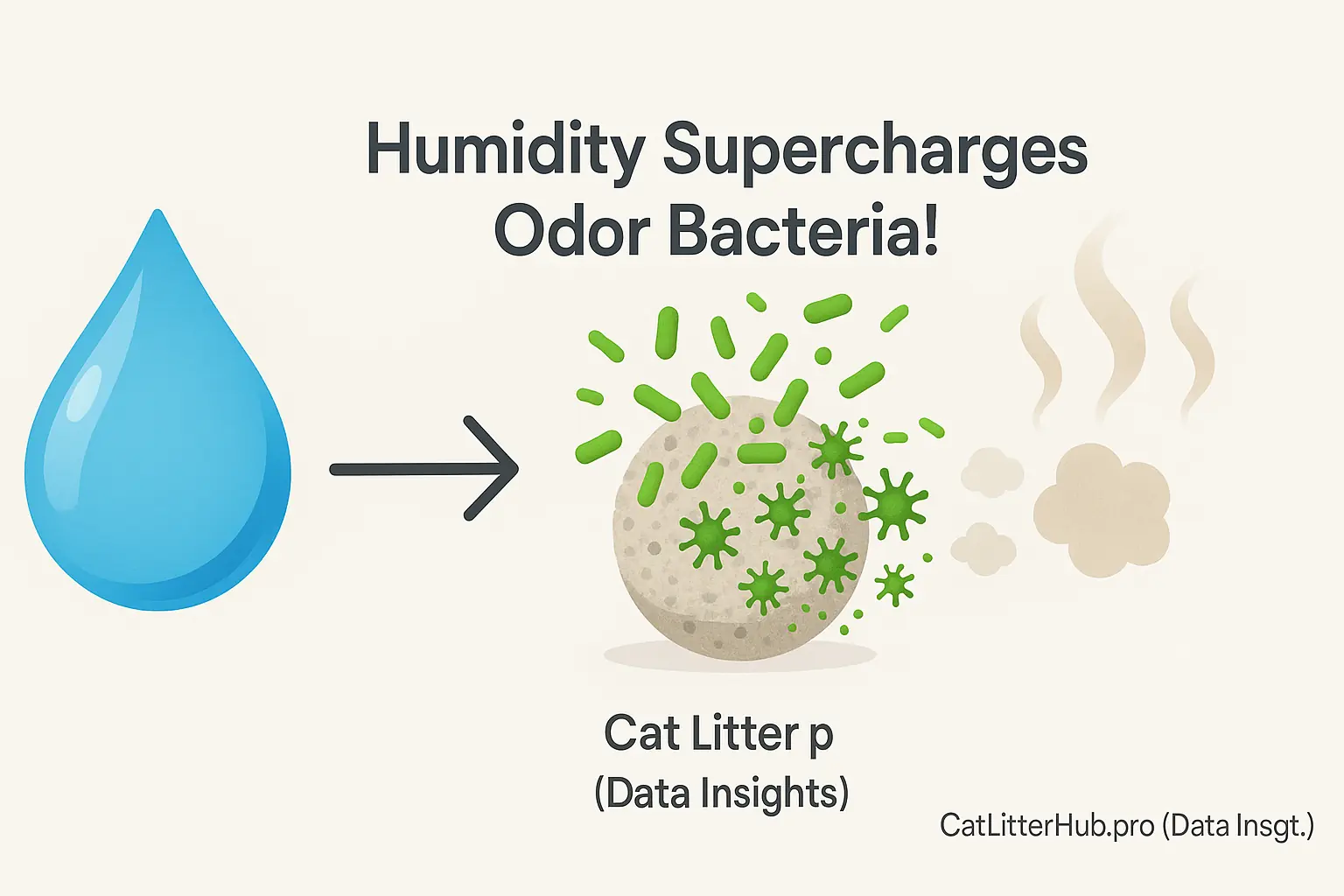
Humid air often reactivates dormant bacteria within soiled cat litter. These microscopic organisms thrive with increased moisture. They then vigorously convert urea from cat urine into pungent ammonia gas. Many cat owners observe this phenomenon directly. They report a sudden, overwhelming ammonia smell invading their homes on damp days. That's those bacteria feasting.
Many common litter materials are porous. Consider clay, wood, or paper products. High ambient humidity compels these materials to absorb water from the air. Their capacity to trap new liquid waste and its odors then diminishes. Moisture makes trapped odorants more volatile. These compounds escape into the air more readily. Countless cat owners describe their litter feeling damp, then suddenly releasing old, unwelcome smells.
Clumping litters also face challenges in high humidity. Airborne moisture directly attacks the integrity of litter clumps. Users frequently describe these clumps becoming soft, often turning to mush. These weakened clumps then easily break apart during routine scooping. A cat’s digging can shatter them too. This breakage exposes more soiled litter surface area, releasing a stronger wave of odor. Cleaning transforms into a frustrating, far smellier chore for many owners.
Interactive Tool: Is Your Litter Box an Odor Bomb Waiting to Happen? (Humidity Risk Check)
Humidity & Litter Odor Risk Check
This quick check gives you a solid starting point. It pinpoints your specific humidity-odor risk. Many cat owners tell us they never realized how much local weather patterns actually influenced their litter box smell. Simple awareness is power.
Armed with this insight, you can take targeted steps. Explore our detailed guides for comprehensive strategies. Our Extreme Odor Solutions page offers a deep dive into conquering tough smells. Our specific litter type analyses also reveal crucial performance details. Many users who actively manage humidity and choose appropriate litters report huge improvements. Success stories abound. Even in really steamy climates.
User Reports: Which Litter Types Suffer Most in Humidity (And What Owners Do About It)
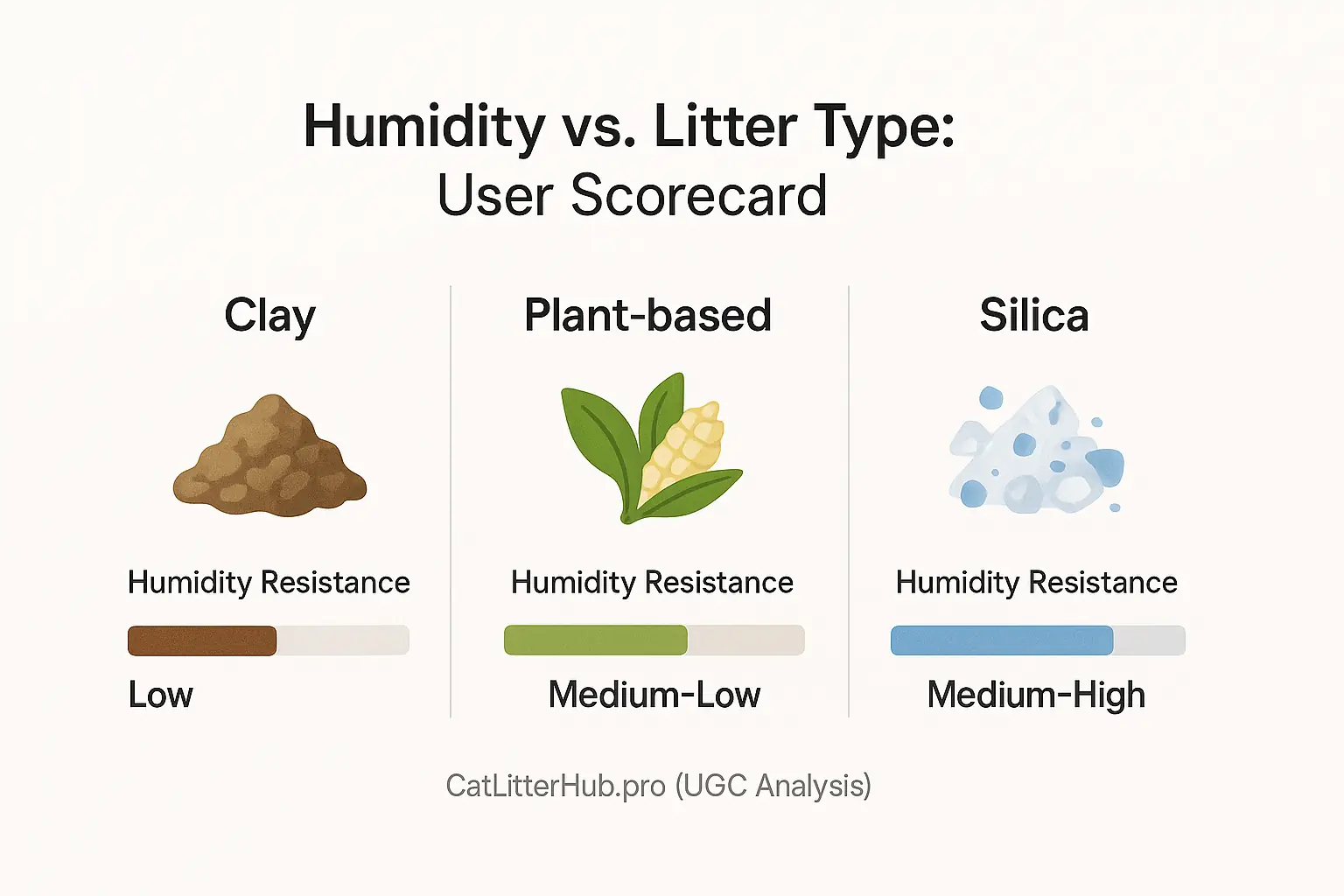
Traditional clumping clay litters face significant challenges when humidity rises. User experiences consistently describe these litters transforming into potent odor amplifiers. Stickiness becomes a major issue. "My go-to clay turns into what I call 'bottom-of-the-box cement' every summer," is a typical complaint heard from the community. Owners report scooping becomes an arduous, frustrating chore.
Certain natural, plant-based litters also draw mixed feedback in damp environments. Users of some corn or wheat litters mention a distinct, musty smell developing. This isn't cat waste odor. It's different. Concerns about mold sometimes surface if the litter remains too moist for too long. One common story: "I love that my corn litter is eco-friendly, but during that humid spell last August? It started smelling...funky, like damp grain. Had to toss the whole lot."
Silica gel crystals generally earn better marks from cat owners for handling humidity. These litters tend to stay drier. They control odor longer than other types in damp conditions. However, even silica's performance can be impacted. Extreme, prolonged humidity can shorten its effective lifespan. "My crystals are usually champs," many users agree, "but after a week of non-stop rain and 90% humidity, even they started to feel a bit spent. Still better than clay in the damp, though!"
What are resourceful cat owners doing about these humidity-related litter problems? Increased scooping frequency is a fundamental tactic. Some owners meticulously seek out specific "all-weather" litter formulas, reporting better consistency. Improving ventilation around the litter box area helps many. A surprising number of users adopt a seasonal strategy, switching to a more humidity-resistant litter type during the dampest months. As one owner shared, "Come rainy season, I switch from my usual to . It's a bit more expensive, but worth it to avoid the stink and mess."
Beating Humidity-Fueled Litter Odor: A Proactive Owner's Checklist
Humidity undeniably fuels litter box odor. Many cat owners share a key realization. "Understanding the why makes finding solutions so much easier," echoes through countless user experiences. This knowledge transforms a frustrating problem. The collective experience of cat owners reveals this path to control.
What can you do? Proactive steps greatly reduce humidity-related smells. We synthesized community wisdom. This practical checklist offers solutions:
- Choose your litter wisely. Consider options excelling in humid conditions if dampness is your home's reality.
- Boost airflow near the litter box. A small fan often makes a big difference, users frequently report.
- Adjust your cleaning routine. More frequent scooping and full changes combat dampness during humid weather.
- Store fresh litter smartly. Airtight containers prevent pre-use moisture absorption, especially for natural litters. (Find more tips in our Litter Storage Secrets guide.)
You can conquer humidity-driven litter odor. Informed choices empower you. Your home will stay fresher.
Related Insight: Litter Storage Secrets: User Hacks to Keep It Fresh, Dry & Pest-Free (Especially Naturals!)
New litter can disappoint. Ambient moisture is a frequent culprit, especially with natural varieties. Protecting litter before use makes a huge difference. Many owner experiences confirm this simple step.
So, what’s the secret from seasoned users? Airtight containers for backup litter are a top recommendation. Users report this simple habit keeps litter performing optimally and delays premature odors.


